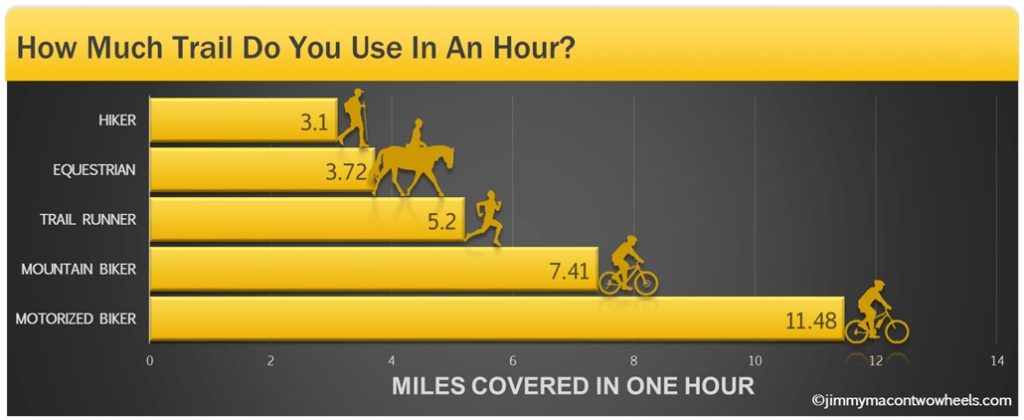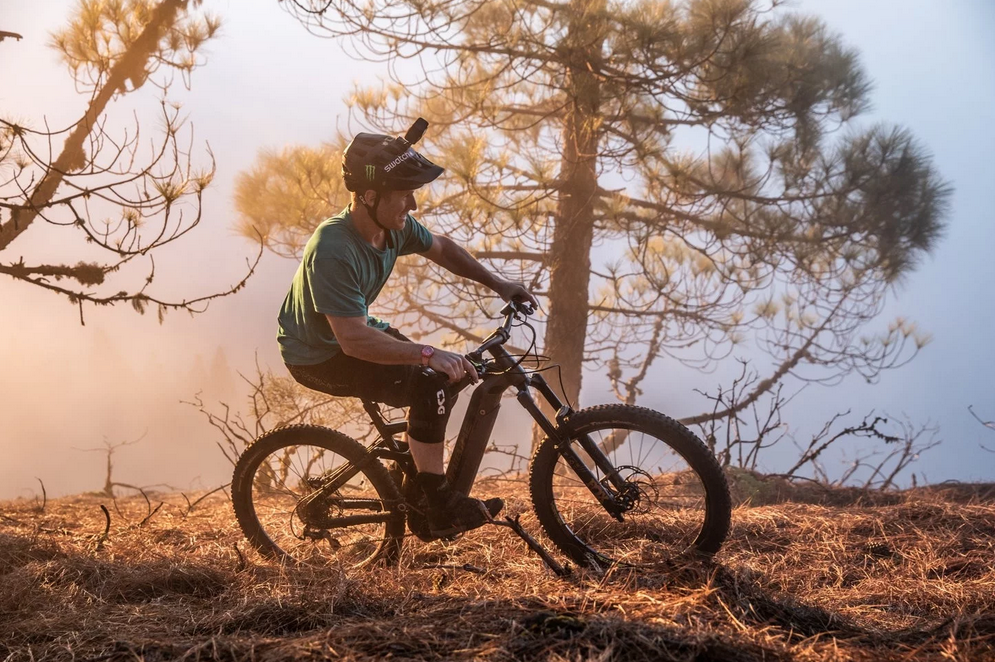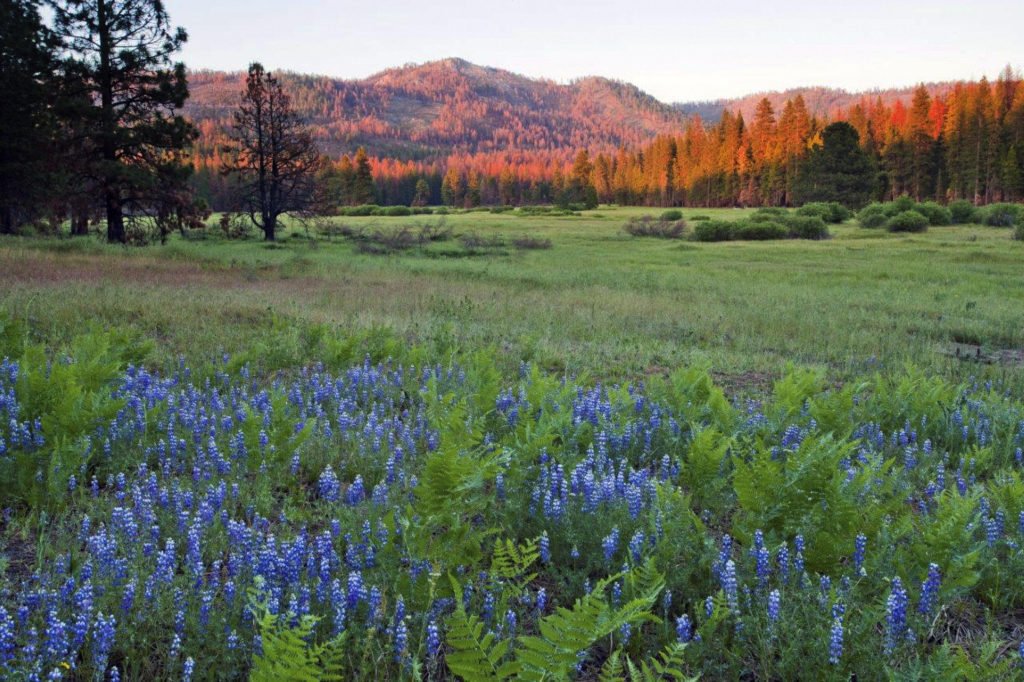The one-page document from Interior Secretary David Bernhardt (Order Number 3376) did far more than redefine non-motorized recreation. The Order revealed a seismic shift in how the Department of The Interior views its responsibility in overseeing public lands. Conservation and stewardship are replaced with a new mandate to exploit public lands to the fullest. And maybe that’s what the majority of Americans want?
The Interior Secretary also showed a lack of understanding by adopting the language crafted by the e-bike industry, whose objective is to sell more e-bikes. Trying to put my cynicism aside, maybe People For Bikes (a trade organization) and the Bicycle Products Suppliers Association have nothing but the best intentions in opening all recreational trails to their products, but I find it hard to believe these organizations are putting people before profits based on the misinformation they disseminate.
What could possibly go wrong by opening trails in National Parks to “low-speed electric bicycles?” Plenty.
1. E-bikes put disabled riders in vulnerable situations on natural-surface trails.
Order Number 3376 hopes to increase disability access to National Parks via e-bikes. Laura Boden commented that “I am disabled and have multiple issues with my back and knees and hips and feet that limit my mobility” who will use an e-bike to “get me places I wouldn’t otherwise be able to go.” A flat tire 8 miles from the trailhead is an inconvenience for a mountain bike rider. It could be a life or death situation for Laura. A crash at 15 miles per hour (that may sound slow, but it is flying on a mountain bike) could impact Laura the rest of her life. The e-bike industry should be ashamed that they are marketing their off-road products to people like Laura. And to Laura, please research other ways to access National Parks without putting yourself at such great risk. There are many alternatives including the organization “Cycling Without Age.”
2. E-bikes put older riders in danger of falls.
Order Number 3376 addresses older citizens and e-bike trade organizations aggressively market their products to older riders. Encouraging older riders to operate an e-bike on natural-surface trails (unpredictable surface conditions and far from medical assistance) could be prosecuted as negligence. According to the Federal Centers for Disease Control and Prevention, one in every five falls by an older adult results in serious injury, such as broken bones, a hip fracture or head trauma. Nationally, 55 percent of all unintentional deaths among American adults in 2012-13 were due to falls, according to the CDC. Unsuspecting older adults are unaware that “low-speed” e-bikes will have them navigating trails at, or above, the speed of a highly-skilled, highly-trained, experienced professional cyclist. A far better alternative for older riders is to contact “Cycling Without Age” and learn of the services they offer.
 3. E-bikes are not “low-speed.”
3. E-bikes are not “low-speed.”
Order Number 3376 uses the term “low-speed electric bicycles.” Low-speed compared to what? Not hikers, equestrians or mountain bikers. Our speed comparison study used a Class-1 e-bike but Order Number 3376 throws Class-3 e-bikes into the group so our study is outdated. The Class-3 bike will blow a Class-1 bike off the trail. A National Park path has hikers averaging 3 miles per hour, equestrians averaging 4 miles per hour, runners averaging 5 miles per hour, mountain bikers averaging 7.5 miles per hour and Class-3 e-bikers averaging 16 miles per hour. E-bikes are not low-speed unless you are driving your car on the trail behind one.

4. E-bikes make great trail-blazing tools.
Order Number 3376 assumes e-bike operators will stay on paths and trails. The power of an e-bike’s motor allows its rider to easily leave established trails and forge through undisturbed foliage. A study funded by People For Bikes is often cited (by people who obviously have never read the whole study) as proving that e-bikes do no more damage to trails than mountain bikes. The often-quoted study actually concludes, “This study does not, and should not be interpreted to represent consensus on the environmental impacts of Class 1 eMTB [e-bike]. Environmental impacts are only part of understanding how a new use, like eMTBs, on public lands may affect the environment, user management, and experiences for other trail users. Social and regulatory factors may be of greater importance in determining appropriate use and should also be studied.”
 5. Order Number 3376 introduces a new fire risk to National Parks.
5. Order Number 3376 introduces a new fire risk to National Parks.
Consumer-direct e-bikes, sometimes imported directly from foreign countries to a consumer’s home, do not have the fire safeguards or the quality-control standards of more sophisticated (expensive) e-bikes. These companies have little concern for product liability. Unlike established brands (like Yamaha, Specialized, Trek and Cannondale), bargain-basement brands can simply disappear the first time one of their products sparks a forest fire. Order Number 3376 treats do-it-yourself e-bike projects, bicycles converted with electric-motor kits and e-bikes from questionable sources the same as e-bikes from established manufacturers. And even a respected (and expensive) brand like Specialized has issues with fire potential.
6. Order Number 3376 encourages replacing human-powered activity with motorized activity.
Riding in a mixed group of cyclists (motorized and human-powered) is difficult. E-bikes are so much faster than a conventional mountain bike that families or groups who adopt one e-bike will replace all human-powered bikes with motorized bikes over time. Replacing conventional bikes with e-bikes will increase the average speed of trail users (you have more riders going way faster) and will require the use of more gas-powered generators in National Forest campgrounds to charge e-bike batteries.
7. Order Number 3376 puts no restriction on an e-bike’s operator’s minimum age.
Order Number 3376 does not address the possibility that many e-bike operators in National Parks will be unsupervised children. E-bikes made for children remove the inherent speed and distance-traveled limitations that a young park visitor would experience hiking or human-powered biking. A child (or group of children) on a motorized vehicle will result in user conflicts on trails and increases the likelihood of environmental damage.
8. Order Number 3376 will force hikers and equestrians off paths open to bicycles.
Being surprised just once by a Class-3 e-biker traveling at 25 miles per hour will motivate most hikers and equestrians to abandon the path for the refuge of a trail closed to cyclists. Similar to point 7, opening paths to motorized activity will push non-motorized users off the path.
SO WHAT DO WE DO NOW?
Nothing. Order Number 3376 may be the best way to prove whether allowing electric-motorized bikes on natural-surface, multi-user trails and paths is a good or a bad thing. If Order Number 3376 opens National lands to scores of new visitors and none of the problems I foresee materialize, fantastic. That would be crow I am willing to eat. I hope my concerns over what Order Number 3376 will do to our National Parks and visitors to those parks are unfounded.
Unfortunately, this give-them-enough-rope approach may be costly, both emotionally and financially, to prove my hunch. Allowing electric-motorized bikes into non-motorized recreational areas is a terrible and dangerous idea. It may take a horrific wildfire. It may take the destruction of sensitive wildlife habitat. It may take a personal tragedy. It may take a few multi-million dollar settlements against the Department of The Interior, e-bike companies or trade organizations who minimized the dangers that e-bikes pose to disabled or elderly consumers. I do not hope that any of these things occur simply to prove my theory correct, but it seems inevitable.
About the author: Jim “Jimmy Mac” McIlvain was Editor of Mountain Bike Action Magazine and Road Bike Action Magazine and a contributing editor of Electric Bike Action Magazine. He has been used as a resource by land management agencies in developing e-bike and mountain bike policy. He welcomes feedback or questions from land management agencies, retailers and riders who deal with e-bike issues. The Jimmy Mac On Two Wheels website is self-funded.
